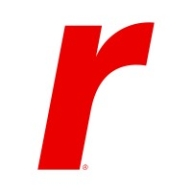![Dell PowerEdge VRTX [EOL] Logo](https://images.peerspot.com/image/upload/c_scale,dpr_3.0,f_auto,q_100,w_64/nb70b5ansummme9cc5q5ymwyalbv.png)

Rackspace OpenStack and Dell PowerEdge VRTX EOL are competing products in the enterprise IT infrastructure market. Rackspace OpenStack offers an edge in scalability and performance flexibility, whereas Dell PowerEdge VRTX EOL stands out with its comprehensive integrated hardware solutions suitable for small to medium-sized businesses.
Features: Rackspace OpenStack offers cloud scalability, open-source adaptability, and extensive integration capabilities. Dell PowerEdge VRTX EOL provides robust integrated hardware, virtualization support, and flexibility for various IT workloads. Rackspace handles cloud-based operations efficiently, and Dell's system enables smooth hardware integration and management.
Room for Improvement: Rackspace OpenStack could improve on simplifying deployment processes and expanding customer service options. Enhancements in user interface design and reducing the learning curve for new users are also areas for Rackspace to address. Dell PowerEdge VRTX EOL has room for improvement in providing more advanced networking options and refining virtualization capabilities. Additionally, offering more competitive pricing and improving cloud service integration would benefit Dell's offering.
Ease of Deployment and Customer Service: Rackspace OpenStack requires technical expertise with extensive configuration options, while Dell PowerEdge VRTX EOL allows for a streamlined setup with pre-defined configurations. Dell provides dedicated support for swift problem resolution, contrasting with Rackspace's flexible support channels for specific cloud environments. Generally, Dell's system offers a more straightforward deployment process.
Pricing and ROI: Rackspace OpenStack boasts a lower initial setup cost with scalable pricing models, enhancing long-term ROI for operations with fluctuating demand. Dell PowerEdge VRTX EOL involves a higher upfront investment but provides significant long-term value through reduced operational expenses. Rackspace's model is appealing for dynamic projects, whereas Dell ensures predictable ROI for stable, long-term endeavors.


| Company Size | Count |
|---|---|
| Small Business | 13 |
| Midsize Enterprise | 5 |
| Large Enterprise | 3 |
| Company Size | Count |
|---|---|
| Small Business | 7 |
| Midsize Enterprise | 3 |
| Large Enterprise | 3 |
Dell PowerEdge VRTX [EOL] provides compact, integrated management with shared storage and networking, ideal for small companies seeking easy scaling. Users value its robust security, stability, and processing power within an all-in-one configuration.
PowerEdge VRTX combines servers, storage, and networking into a single unit, optimizing performance and reducing the need for separate components. It offers excellent technical support and a resourceful design with multiple blades. Despite its current web-based storage and networking management being slow, there is a demand for a Windows-based application, increased storage capacity, auto-tiering features, and improved hyper-convergence capabilities. The integration with other storage solutions could be better, and a more compact version is suggested. Continued support and firmware updates past its lifecycle, better pricing, and noise reduction are requested by users.
What are the main features of Dell PowerEdge VRTX?In branch offices and industries requiring reduced space and IT needs, PowerEdge VRTX supports virtualization, client-server applications, and financial services. It aids infrastructure in providing internet and security services, highlighting its ease of installation and effective customer support.
We monitor all Converged Infrastructure reviews to prevent fraudulent reviews and keep review quality high. We do not post reviews by company employees or direct competitors. We validate each review for authenticity via cross-reference with LinkedIn, and personal follow-up with the reviewer when necessary.